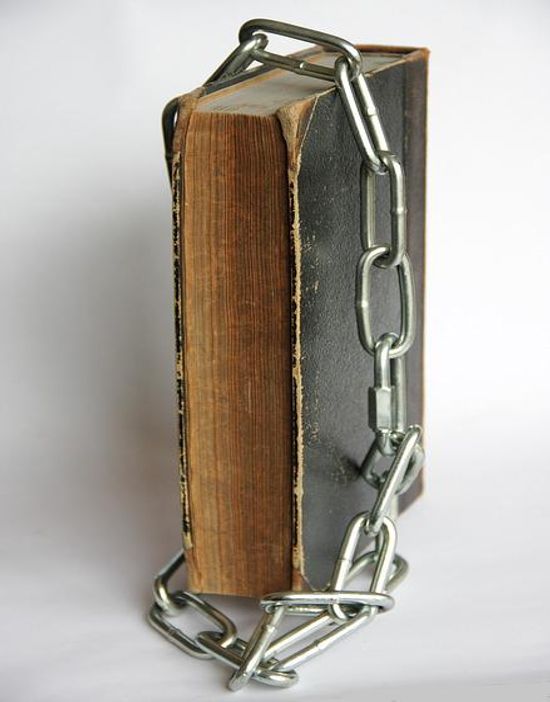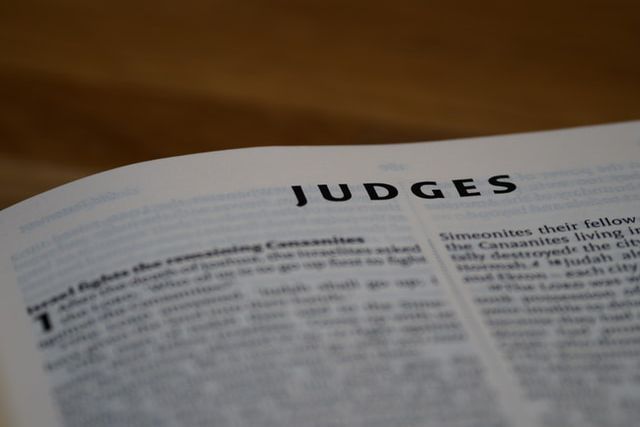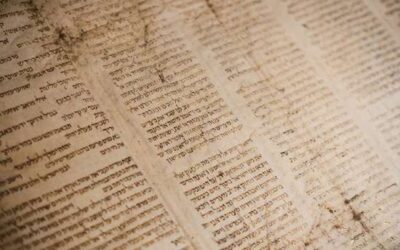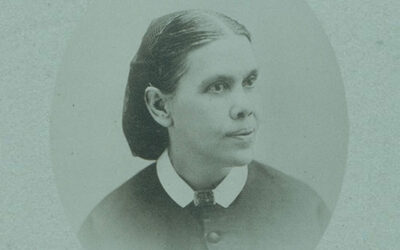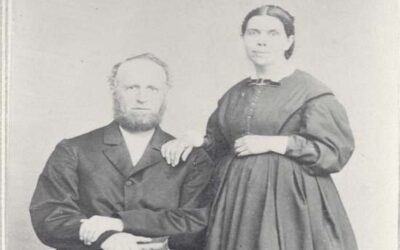The Bible is the number one bestseller in the world of all time.1 It’s translated into thousands of languages, read by people of all ages and backgrounds.
Its popularity is incredible. But what’s the history of the Bible?
That’s incredible too. The Bible, made of 66 books, was written over a span of 1500 years by 40 (or more) different authors—during a time when there was no Microsoft Word, keyboards, or electronic printers. Scribes meticulously copied its messages by hand and preserved it. And faithful believers cherished it, even at the risk of death.
That was all so that we could have this book today.
So let’s get an overview:
How old is the Bible?
It depends on which part of the Bible you’re talking about! But from what scholars have been able to measure, the oldest part of the Bible is at least 3,400 years old.2
When was the Old Testament written?
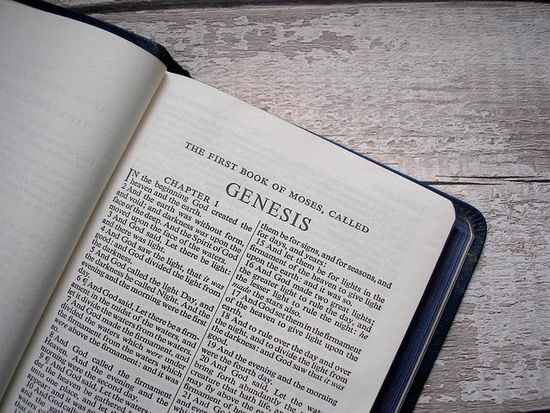
Image by Scottish Guy from Pixabay
Because the Bible is a collection of books, it wasn’t written all at once. We believe the Old Testament was written roughly between 1500 bc and 400 bc. It covers about 3,500 years of history from Creation onward.
Moses most likely wrote the first five books (Genesis, Exodus, Leviticus, Numbers, and Deuteronomy) around approximately 1500 bc.3
The prophets, such as Isaiah, Hosea, Amos, and Micah (to name a few) were the last to write their books. Many of them lived around the 8th century bc and would have authored the books with their names as the title.4
And Malachi was likely the final author—in the 5th century.5
When was the New Testament written?
The books of the New Testament were written between approximately ad 50 and 100.6 They cover history from the birth of Jesus (~5 bc) to John’s writing of Revelation—a span of fewer than 100 years.
See the approximate dates of the writing of each New Testament book.
Who wrote the Bible?

Photo by Hannah Busing on Unsplash
From what historians have been able to tell, the Bible was written by at least 40 different authors in three different languages over about 1,500 years.
Here are some of the most well-known authors of the Old Testament:
- Moses (the Pentateuch, Job, and Psalm 90)
- Joshua
- Samuel (Judges, Ruth, 1 Samuel 1–24)
- Ezra (Ezra and the Chronicles)
- David (most of the Psalms)
- Solomon (Proverbs, Ecclesiastes, Song of Solomon)
- Isaiah
- Jeremiah
- Daniel
And the New Testament:
- Matthew
- Mark
- Luke
- John
- Paul
- James
- Peter
These writers came from varying walks of life. They had different jobs and roles.
Some were prophets (Samuel, Daniel, Ezekiel, etc.), and some were kings (David, Solomon, Nebuchadnezzar). Others were scribes or scholars, such as Baruch, who helped Jeremiah to record his book (Jeremiah 36:4, 17–18). Then there was Nehemiah, who was a cupbearer to a king, and Isaiah, who was a priest.
And don’t forget—many of the New Testament writers were fishermen (James, John, and Peter).
What variety! And there was a reason. It has to do with the way God inspired the Bible’s writing.
How did God inspire the Bible writers?
“All Scripture is given by inspiration of God” (2 Timothy 3:16, NKJV). But this doesn’t mean God dictated its contents to the writers word for word. Instead, they wrote “as they were moved by the Holy Spirit” (2 Peter 1:21, NKJV). God impressed them with messages, which they recorded through their own experiential and cultural lenses.
For example, if God had wanted to simply dictate the full account of Jesus’ life, He wouldn’t have needed four Gospel writers.7
But He valued the human perspective of the divine and chose four different men to share their encounters with Jesus.
This is also why Luke spent time researching and compiling the story of Jesus for his Gospel (Luke 1:1–3).
God didn’t tell Luke exactly what to say. Instead, the Holy Spirit guided him in uncovering information and gathering eyewitness accounts.
Yes, some portions of the Bible are direct quotations of God, but much of the Bible reflects the unique voices of its writers.
How was the Bible transmitted?
The transmission of both the Old and the New Testaments follows a basic pattern: They were transmitted orally before being recorded in manuscripts and carefully copied and preserved.
The Old Testament

Photo by Konrad Hofmann on Unsplash
The early accounts of the Old Testament (Creation, the Flood, Abraham’s life, the Israelites’ journey) were passed down by oral tradition, or word of mouth, until Moses wrote the first five books of the Bible, known as the Pentateuch or Torah.
The same was the case for the later history of the ancient Israelites.
Jewish scribes and priests copied the texts of the Old Testament, also known as the Hebrew Bible.8
Today, the oldest known books and fragments of the Hebrew Bible are the Dead Sea Scrolls—some of which date to the third century bc.9
Scholars who have compared the Dead Sea Scrolls and more recent manuscripts have found that the message has remained nearly unchanged.10
The New Testament
Followers of Jesus also passed down accounts of Him and His teachings by oral tradition—stories, songs, and poetry.11
In Judaism, disciples would memorize the teachings of their rabbi and then share them with others. We see this in the way that the authors of the New Testament spoke of having “received” a teaching or it being “delivered” to them (1 Corinthians 15:3–8; 1 Thessalonians 2:13).12
Over time, the eyewitnesses of Jesus’ life realized the need to record their accounts. With the persecution and death of Christians, they didn’t want the history and teachings to be lost.
Some of the apostles also wrote letters, known as epistles, to encourage believers throughout the then-known world.
The churches cherished these messages and read them out loud in a first-century practice called communal reading. Because the people heard the epistles often and were familiar with them, it was more difficult for errors to creep into the text.13
Thus, the culture of the time helped preserve the message of God’s Word.
How were the books of the Bible compiled?
The books of the Bible were compiled by scribes and scholars who used certain criteria to recognize their divine origin. This process of deciding which books should be in the Bible is called canonization.14 Understanding how carefully scholars searched for verification of the Bible’s authenticity gives us reason to trust it today.
But note:
Canonization doesn’t give the Bible books authority. Instead, it acknowledges the authority that they already carry.15
Here’s a bird’s-eye view of the criteria used to select the books for the biblical canon:
- Evidence of inspiration—The messages had to be consistent with messages God had already given. For example, the New Testament writings had to harmonize with those of the Old Testament, and the writings of the prophets, with the Pentateuch.
- Authority of the authors—The books of the Bible carried authority because their authors received revelations from God and were eyewitnesses of the events.16
- Wide acceptance—The writings were being used and accepted by people who knew the accounts well and had contact with their writers and eyewitnesses.
Now that we understand the reasoning behind canonization, let’s look at how it played out.
The Old Testament canon
People viewed the Old Testament writings as authoritative from the start. We can see this in the way that later writers reference the earlier books. (See Nehemiah 8:1; Zechariah 7:12; Daniel 9:2, 11.)17
We don’t know for sure who compiled the books of the Old Testament, but Ezra or Nehemiah may have been the ones.18
The Jewish historian Josephus speaks of 22 books existing by the time of Artaxerxes (400 bc).19
They most likely correspond to the 39 books that exist today because the Jews had a different organizational system for their Scriptures.20
It’s almost certain the Hebrew Bible had been canonized by the time of Jesus because of the way He and the New Testament writers refer to it. Jesus Himself divided the Old Testament into “the law, prophets, and psalms” (Luke 24:44)—not much different from the Hebrew Bible divisions: the Law, the Prophets, and the Writings.21
The New Testament canon
The early Christian church viewed the epistles as authoritative at the time of their writing. Peter’s epistle speaks of Paul’s writings as “Scriptures” (2 Peter 3:16, NKJV).
Church fathers of the first and second centuries, who had parts of the New Testament, did also.22
But the need to canonize the New Testament became urgent in the middle of the second century.
Why?
Heretical teachings were spreading.
One individual, Marcion of Sinope, rejected the Old Testament and parts of the New, compiling his own list of books instead.23 This was in addition to other circulating writings that claimed to be Scripture but contradicted it—such as the Gnostic gospels and apocryphal books.24
One of the earliest records of New Testament canonization is the Muratorian Fragment, which is thought to be from around this time. Its list contained 22 of the 27 books of the New Testament that we know today.
But the first one to list all 27 books was a bishop of Alexandria named Athanasius.25
Not much later, the following church councils affirmed the same canon:26
- Rome (ad 382)
- Hippo (ad 393)
- Carthage (ad 397)
How are the books of the Bible organized?27
The books of the Bible are not in chronological order. Rather, they are organized according to their types of literature—what is called canonical order: the main narrative, historical accounts, and other writings.
We see this pattern in the Old Testament, though biblical scholars don’t know the exact reason or who determined it.28
The New Testament follows this order as well. Before its compilation, it was circulated during the first couple of centuries ad in groups like the following:
- The Gospels and Acts (Matthew to Acts)
- The Pauline epistles (Romans to Hebrews)
- The general epistles (James to Jude, plus Revelation)
These groups became the order we know today.
How has the Bible survived through history?
The Bible has weathered a tumultuous history over the past couple thousand years. But God protected it and used faithful believers to carefully preserve it. This in itself is a miracle that attests to its trustworthiness!
Here are a few highlights.
Suppression of the Bible
The Bible has been withheld and even banned at different times, particularly during the Middle Ages. But it has never been completely eradicated.
From ad 303 to 306, the Roman emperor Diocletian persecuted Christians and burned their Bibles. Things seemed to improve after this, though.
But even when the Bible was available, the common people often could not read it for themselves because they were illiterate or the Bible was not in their language.
The clergy took advantage of this situation and encouraged the people to trust what the clergy said about the Bible.29 As you can imagine, this opened the way for many corrupt practices within the main church of the time—the Roman Church.
Then, events took a turn for the worse.
The Inquisition, lasting from the 12th century to the 18th century, made it heresy to read the Bible in one’s own language. The Roman Church set up courts of inquisition to condemn and punish people who committed such “crimes.” This movement, strongest in Spain, spread throughout Europe.30
Even so, God had faithful people—such as the Waldensian people of Italy—who maintained the religion of the apostles. They preserved pure manuscripts of the Bible, known as the Textus Receptus (received text), that had not been corrupted by Greek philosophy or teachings.31
The printing of the Bible
From the time before Christ down to the early first millennium, scribes copied the Bible by hand. Monks continued this practice during the Middle Ages.32 But the printing press would change everything.
When Johannes Gutenberg invented the printing press in 1450, the first book he printed was the Latin Bible, or the Gutenberg Bible.33
The impact was huge:
- Bibles became more available and less expensive for everyone
- More “common” people began learning to read
- As people read Scripture for themselves, it exposed the corrupt religious system
Not surprisingly, the Reformation soon followed.
The Reformation
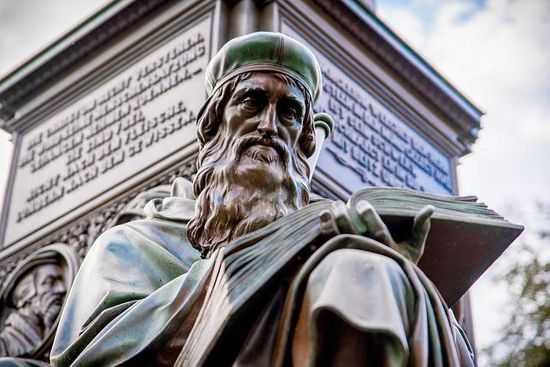
Image by Tobias Albers-Heinemann from Pixabay
The Bible and its printing fueled the Reformation, which had the theme sola scriptura—“the Bible alone.” As people began to read the Bible for themselves, they stood up against church traditions that contradicted it.34 At the same time, the Bible began to be more widely translated.
One of the earliest Reformers was John Wycliffe, who completed the first English Bible translation in 1382.35 Though his translation came from the Latin Vulgate, which contained some theological errors, it was a start.
In 1516, a Dutchman named Erasmus put together a Greek Bible translation from the Textus Receptus. Faithful Christians had preserved this manuscript, and it hadn’t been corrupted like many of the Latin manuscripts.36
Not many years later, Erasmus’s work became a major source for both Martin Luther’s German translation and William Tyndale’s English translation.37
Unfortunately, the Roman Church did not take kindly to translations that did not come from the Latin Vulgate, the “official” version of the time. Many of Tyndale’s Bibles—and eventually he himself—were burned.
But more English Bible translations followed:38
- The Coverdale Bible (1535)
- The Geneva Bible (1560)
- The Bishop’s Bible (1568)
The most well-known is the King James Version of 1611. In a political move to unite the religious factions in his kingdom, King James commissioned 50 biblical scholars. These scholars used Hebrew and Greek manuscripts, especially Erasmus’ translation.39
The result?
A classic version of the Christian Bible that has stood the test of time and is still cherished by many today. Though other modern translations have become popular now, the King James Bible remains a respected source for study.
How did the Bible become so widely published?
Distribution of the Bible exploded after the Reformation, especially with the Bible societies of the late 1700s and missionary movements of the 1800s.
At the time of the Reformation, the Bible was only in 33 out of the 6,000 languages worldwide. But by 1992, parts of it were in at least 2,009 languages, reaching 80% of the world’s population.40
Missionaries and organizations, such as the Wycliffe Bible Translators, have been key in making this happen.41
The British and Foreign Bible Society has published over 550 million copies of the Bible in 700 languages.42 The American Bible Society has also had a huge impact and still distributes many millions of Bibles each year.43
What impact has the Bible had throughout history?
The Bible’s impact throughout history is much greater than we even realize. Though we can’t deny that Scripture has certainly been misused, many of the Bible’s core principles have influenced government, literacy and language, science, technology, art, and music—to name a few.
For example:
- The Christian Bible has shaped western government with its principles of respect for individual rights, the value of human dignity, and the authority of the law.44
- It has encouraged science. Pioneers of science were Christians who took their inductive method of Bible study and used it to study nature.45 Think of Robert Boyle or Isaac Newton.
- It has spurred literacy because people wanted to read the Bible in their languages.
- Beautiful classical music sprang from the Holy Bible. Some composers that found inspiration in the Bible are Purcell, Bach, and Handel.46
- Humanitarian work has often come from people who wanted to follow the Bible’s instructions to care for “the least of these” (Matthew 25:45, ESV). As a result, abolitionists rallied for the end of slavery. Christians like Elizabeth Fry worked for prison reform. And people like William and Catherine Booth (founders of the Salvation Army) committed their lives to help the hungry and homeless.
Why does the Bible matter?
The Bible, though written within a certain culture and context, has endured the test of time. It has proved itself applicable to people across the ages with its timely and timeless principles.
How?
The biblical narrative traces an overarching story that is just as relevant to us as it was to those who wrote it. It shows how humans exercised their freedom of choice, lost their connection with God, and experienced untold suffering as a result. It gives us insight into the battle between good and evil that has raged throughout history.
But it also shows us how God is working to rebuild His relationship with us through Jesus—who is central to this story. The paradise that was lost at the beginning (Genesis 1–3) will be restored (Revelation 21–22) because of what Jesus is doing for us.
We’ve gotten a small glimpse into the history of the Holy Scriptures that holds this narrative. We’ve learned about its authors, how it was written, and the way it’s been carefully compiled and preserved through history. We’ve also seen how it has impacted society and individuals.
And that gives us confidence that we can trust the Bible. We can trust that this ancient book is God’s Word and has the power to impact our lives, too.
Its teachings guide, comfort, and transform us—as no other book can.
If you’re in search of answers, why not give the Bible a try?
Choose an Online Bible Study
Want to keep learning? Find out more about Jesus, humanity, the plan of salvation, and how God loves you enough to sacrifice everything, just to give you a chance to choose Him.
Sometimes it can be hard to know where to start, that’s why we offer free, user-friendly, online Bible study options you can do anytime, anywhere, and at your own pace.
This online Bible school will take you through the major themes of Scripture, breaking down the Bible’s complex concepts into bite-sized pieces, which can lead you toward the answers of life’s more challenging questions.
- “Best-Selling Book,” Guinness World Records.[↵]
- Arnold, Clinton, How We Got the Bible (Zondervan, Grand Rapids, MI, 2008), p. 6.[↵]
- Lightfoot, Neil, How We Got the Bible (Baker Books, Grand Rapids, MI, 2003), p. 23.[↵]
- Kenyon, Frederic, The Story of the Bible (J. Murray, London, 1936), ch. 2.[↵]
- Lightfoot, Neil, How We Got the Bible (Baker Books, Grand Rapids, MI, 2003), p. 155.[↵]
- Albright, W. F., Discoveries in Bible Lands (The Biblical Colloquium, Pittsburgh, 1955), p. 136.[↵]
- Davidson, Richard, “Who Authored the Bible?” Ministry, March 2012.[↵]
- Schniedewind, William, “Origins of the Written Bible,” PBS, Nov. 18, 2008.[↵]
- “The Dead Sea Scrolls,” The Israel Museum, Jerusalem.[↵]
- Millar Burrows, The Dead Sea Scrolls (Viking, New York, 1955), p. 321.[↵]
- White, L. Michael, “Importance of the Oral Tradition,” PBS[↵]
- Moreland, JP, “The Historicity of the New Testament,” BeThinking.org.[↵]
- Lindgren, Caleb, “Reading Together, Early Church Style,” Christianity Today, April 20, 2018.[↵]
- Donkor, Kwabena, “Who Decided Which Books Should Be Included in the Bible?” Ministry, March 2012.[↵]
- Lightfoot, Neil, How We Got the Bible (Baker Books, Grand Rapids, MI, 2003), p. 153.[↵]
- Donkor, Kwabena, “Who Decided Which Books Should Be Included in the Bible?” Ministry, March 2012.[↵]
- Ibid.[↵]
- Ibid.[↵]
- Josephus, Against Apion 1:7–8.[↵]
- Lightfoot, Neil, How We Got the Bible (Baker Books, Grand Rapids, MI, 2003), p. 155.[↵]
- Ibid., p. 153.[↵]
- Donkor, Kwabena, “Who Decided Which Books Should Be Included in the Bible?” Ministry, March 2012.[↵]
- Miller, Stephen, “How We Got Our Bible: A Gallery of Mavericks and Misfits,” Christian History, no. 43, 1994.[↵]
- Donkor, Kwabena, “Who Decided Which Books Should Be Included in the Bible?” Ministry, March 2012.[↵]
- Miller, Stephen, “How We Got Our Bible: A Gallery of Mavericks and Misfits,” Christian History, no. 43, 1994.[↵]
- Donkor, Kwabena, “Who Decided Which Books Should Be Included in the Bible?” Ministry, March 2012.[↵]
- Prahlow, Jacob, “The New Testament in Order,” Conciliar Post, April 14, 2021.[↵]
- Oxford Companion to the Bible (Oxford University Press, New York, 1993), p. 98.[↵]
- Armstrong, Dave, “Did Pope Innocent III Forbid the Bible in 1199?” Patheos, May 11, 2021.[↵]
- Foxe, Foxe’s Book of Martyrs (Hendrickson Publishers, Peabody, MA, 2004), pp. 78–79.[↵]
- Wilkinson, Benjamin, Our Authorized Bible Vindicated (Takoma Park, MD, 1930), pp. 23–24.[↵]
- Arnold, Clinton, How We Got the Bible (Zondervan, Grand Rapids, MI, 2008), p. 42.[↵]
- Comfort, Philip, “How We Got Our Bible: Christian History Timeline,” Christian History, no. 43, 1994.[↵]
- Pelikan, Jaroslav, Whose Bible Is It? (Viking, New York, 2005), p. 164.[↵]
- Lightfoot, Neil, How We Got the Bible (Baker Books, Grand Rapids, MI, 2003), p. 176.[↵]
- Wilkinson, Benjamin, Our Authorized Bible Vindicated (Takoma Park, MD, 1930), pp. 33–34.[↵]
- Miller, Stephen, “How We Got Our Bible: A Gallery of Mavericks and Misfits,” Christian History, no. 43, 1994.[↵]
- “Pre-KJV English Translations,” Christian History, no. 100, 2011.[↵]
- Curtis, Kenneth, “How the King James Bible Was Born,” Christian History, no. 100, 2011.[↵]
- Metzger, Bruce, “Circulation of the Bible,” Oxford Companion to the Bible, p. 122.[↵]
- Metzger, Bruce, “How We Got Our Bible: Christian History Interview,” Christian History, no. 43, 1994.[↵]
- “Bible Societies,” Encyclopedia.com.[↵]
- “American Bible Society,” Britannica.com.[↵]
- Mangalwadi, Vishal, “Bible Societies,” Truth Matters, YouTube video, Oct. 2, 2017.[↵]
- Mangalwadi, Vishal, “The Source of the Scientific Revolution,” Truth Matters, YouTube video, Nov. 6, 2017.[↵]
- Heighes, Simon, “How the King James Bible Inspired and Influenced Composers and Their Music,” Classical Music, classical-music.com, Feb. 11, 2022.[↵]
Want to learn more about History of the Bible?
More Answers
What Does the Bible Mean When It Calls Jesus the Son of God?
When the Bible calls Jesus the Son of God it’s referring to His divinity. Learn what makes this so significant and what it has to do with salvation.
How Adventists View the End of the World
The end of the world is no fun to think about. But here’s how we can actually find hope and comfort in what’s to come.
What Is an Adventist Medical Missionary?
A medical missionary in the Adventist Church is someone who cares for the medical needs of people as a way of showing the love of Jesus. They may travel to another country, or even just serve in their hometown.
Is the Seventh-day Adventist Church Protestant?
Learn how the beliefs of the Seventh-day Adventist Church align with the “5 solas” of Protestantism.
The True Events Surrounding the Birth of Jesus
Jesus’ birth involved many strange events: a pregnant virgin, a stable birth, angels appearing to shepherds, and wealthy visitors. These help us understand His supernatural yet incredibly humble life.
Are Seventh-day Adventists Evangelicals?
According to its origins and definition, evangelicalism is about following Jesus and the Bible and sharing the Gospel through the way we live our lives. Adventists wholeheartedly harmonize with these principles.
Could Anything Keep Me from Becoming an Adventist?
We are each saved through Christ. But when it comes to church membership, are there certain beliefs or expectations to become an Adventist?
Do Seventh-day Adventists Have “Rules”?
We uphold principles we believe will help us maintain a closer relationship with Jesus and His Word. Learn how these principles guide Adventist lifestyles.
Your Comprehensive List of Ellen G. White’s Visions
Ellen White—an author, health-reform advocate, Bible scholar, and one of the most influential founding figures of the Seventh-day Adventist Church—was blessed by the Holy Spirit with the spiritual gift of prophecy (1 Corinthians 14; Romans 12:6-8). During her lifetime, she received direct guidance and inspiration from God in several different ways.
Do Seventh-day Adventists Have “Rules” For Marriage?
Around the world, many cultures and religions have various marriage traditions, expectations, or even rules when it comes to choosing a partner, planning the wedding, extended family logistics, or a number of other things.
An In-Depth List of the Prophecies About Jesus
How many prophecies of Jesus are in the Old Testament?
Can a Seventh-day Adventist Marry a Non-Adventist?
Yes. Seventh-day Adventists are not under any official rules that dictate who they can or cannot marry. This is a personal, life-altering decision between the couple and God.
What Adventists Believe About Alcohol and Tobacco Use
The Seventh-day Adventist Church has historically discouraged the use of alcohol and tobacco. Even before the church started in 1863, its leaders were realizing the negative effects of these substances.
What Does the Bible Say About Aliens and UFOs?
In 1938, aliens and UFOs were the subject of a mass prank. Around Halloween, Orson Welles performed a radio adaptation of H.G. Wells’ War of the Worlds. This ended up causing a panic throughout the United States—many people took it to mean that aliens had really attacked New Jersey.
What Do Adventists Believe About the Authority of the Bible?
Learn how one really old book (the Bible) is the sole foundation for all Seventh-day Adventist beliefs.
Is the Soul Immortal? Exploring What Adventists Believe
Based on the way the Bible describes humanity in comparison to God and angels, Seventh-day Adventists believe souls are not something you have, but something you are.
Jewelry—Why Do Many Seventh-day Adventists Choose Not to Wear It?
If you walk into a Seventh-day Adventist church service, you might notice that many people aren’t wearing earrings, bracelets, necklaces, or sometimes even wedding rings.
How the Bible Defines Love
Everyone talks about it, but do we really know what it means?
Why Does God Allow Suffering?
Poverty, genocide, a school shooting. A tsunami or earthquake that wipes out thousands of lives and leaves behind mourning family members.
International Pathfinder Camporee
Youth aged 10-15 in the Adventist Church’s global Pathfinder program look forward to the International Camporee every 5 years. This event brings together Pathfinders from around the world for exciting activities.
What Is Peter’s Ladder of Virtues, and How Does It Work?
Peter’s ladder of virtues is a phrase that refers to eight characteristics to be developed as a person grows in their relationship with Jesus Christ. It can be found in 2 Peter 1.
How Adventists interpret Bible prophecy
Bible prophecy conjures up a variety of emotions in people. For some, it feels exciting or mysterious.
What Counts as “Work” on the Sabbath?
God designed the Sabbath day to be a 24-hour period when we could pause and enjoy the goodness of His creation. We do this by putting aside our regular work so we can focus on spending time with Him and appreciating what He’s created (Exodus 20:8-11).
Moviegoers’ Guide to The Hopeful: The Facts Behind the Film
Learn where and when you can watch The Hopeful and how to get tickets. Already seen it? We’ll uncover the real story that inspired this film.
Protestant Reformation
Martin Luther. The 95 Theses. The Reformation. The Protest. Maybe you’ve heard these terms and wondered, What’s the big deal?
Ellen G. White’s Lasting Legacy
Ellen G. White is a well-known name among Seventh-day Adventists, but she also made an impact in many other parts of history, aside from being a co-founder of the Adventist Church.
Ellen G. White’s Challenging Health Journey
When it comes to lifelong struggles with health, Ellen White is no stranger. In fact, health challenges set the tone for her life early on—years before she was involved in co-founding the Seventh-day Adventist Church.
“What Was Ellen and James White’s Marriage Like?”
Ellen and James White, cofounders of the Seventh-day Adventist Church, met and married under somewhat unusual circumstances. But it’s a sweet story of partners in ministry becoming partners in life. And their married life continued to center on furthering the spread of the gospel together.
What Do Adventists Believe About the Mark of the Beast and 666?
It’s a popular topic, especially during tumultuous times. When everything around you feels chaotic, it’s easy to wonder about the end of the world, and topics like the mark of the beast, as mentioned in Revelation 13, can stir up uneasiness.
Didn’t find your answer? Ask us!
We understand your concern of having questions but not knowing who to ask—we’ve felt it ourselves. When you’re ready to learn more about Adventists, send us a question! We know a thing or two about Adventists.

